
Lecture Eighteen One
Phenylpropanoids

Reading Assignment for the 2nd (& last) Phenylpropanoid
lecture: __________________________________________________________________________________________
1 - Boerjan W, J. Ralph and M. Baucher. 2003. Lignin biosynthesis. Annu Rev Plant Biol 54: 519-546.
2 - Chapter 24, sections 24.11, 24.13 and 24.14 of the Biochemistry & Molecular Biology of Plants class text.
3 - Bartel, B. and S.P.T. Matsuda. 2003. Seeing Red. Science 229: 352-353.
b) OPTIONAL:
1 - Xie, D.Y., S. B. Sharma, N. L. Paiva, D. Ferreira and R. A. Dixon. 2003. Role of Anthocyanidin Reductase, Encoded by BANYULS in Plant Flavonoid Biosynthesis. Science 299: 396-399.
2 - Raes, J., A. Rohde, J.H. Christensen, Y. Van de Peer and W. Boerjan. 2003. Genome-Wide Characterization of the Lignification Toolbox in Arabidopsis. Plant Physiol. 133: 1051-1071.
3 - Lee, K.W., Y.J. Kim, H.J. Lee and C.Y. Lee. 2003. Cocoa Has More Phenolic Phytochemicals and a Higher Antioxidant Capacity than Teas and Red Wine. J. Ag. Food Chem. 57: 7292-7295.
4 - Humphreys, J.M. and C. Chapple. 2002. Rewriting the lignin roadmap. Current Opinion in Plant Biology 5: 224-229.
__________________________________________________________________________________________
Lignans
Lignans are dimeric phenylpropanoids that are mostly formed from coniferyl alcohol.
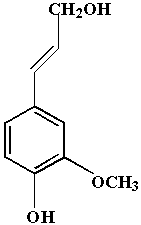
Functions:
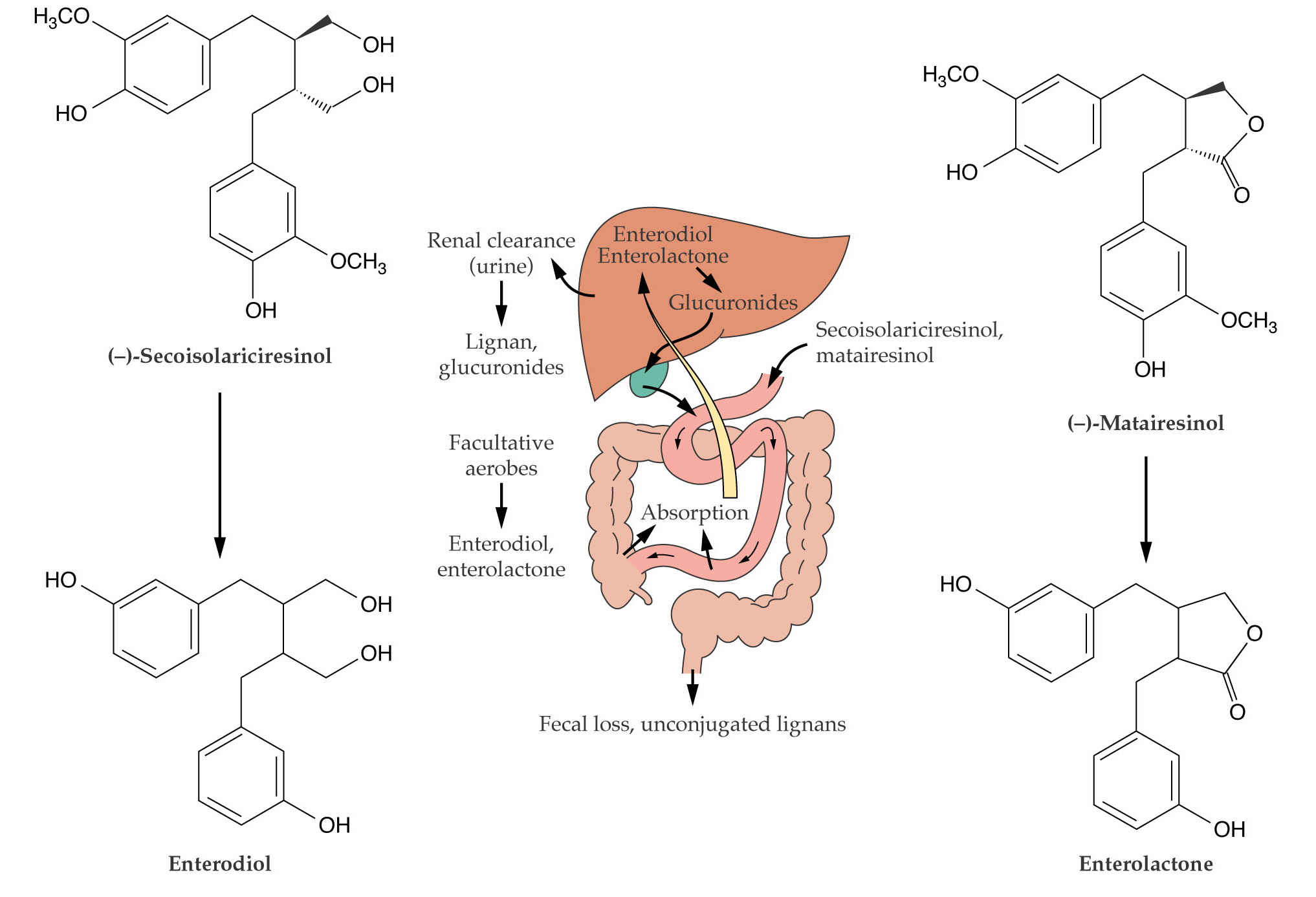
Biosynthesis
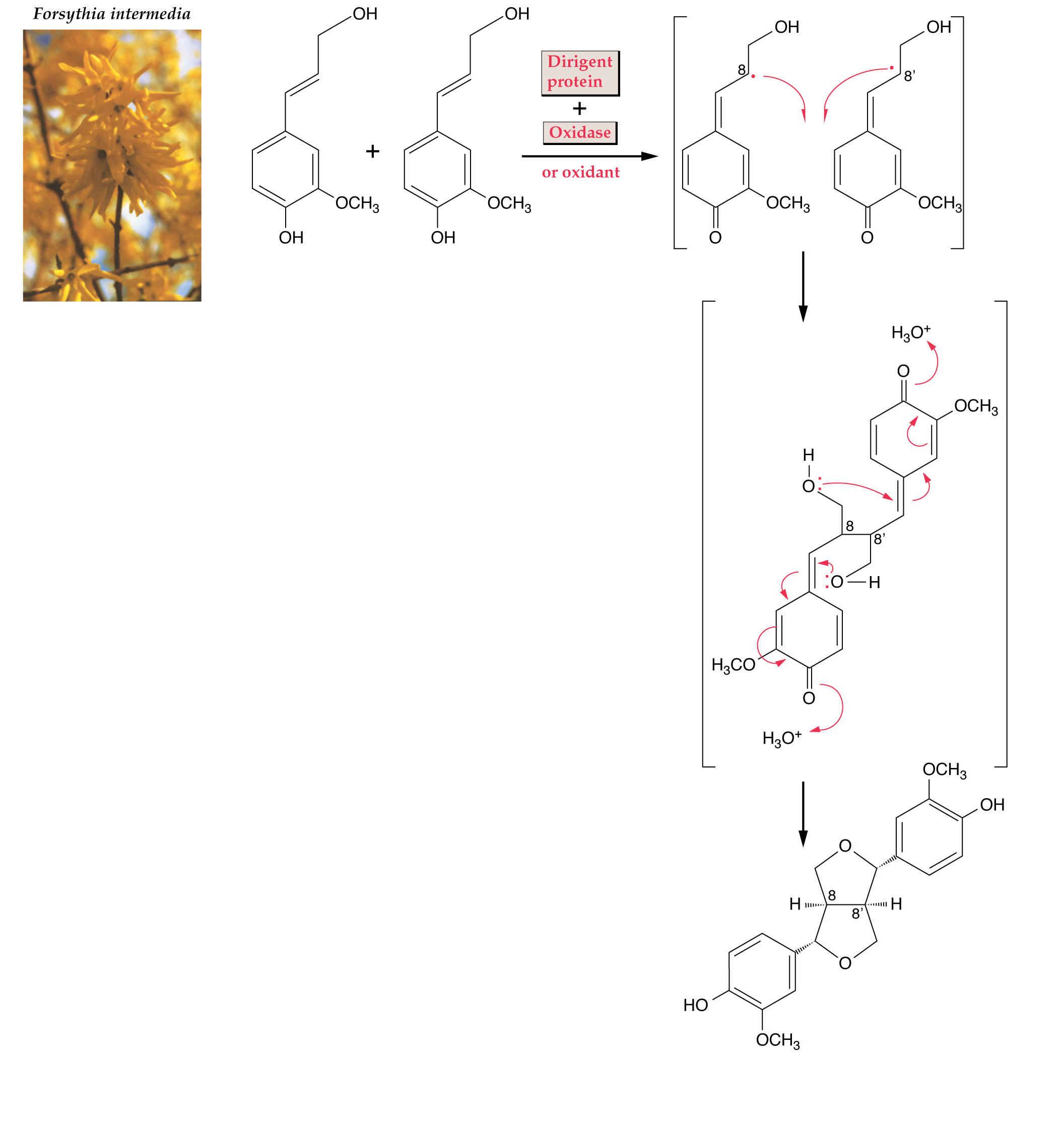
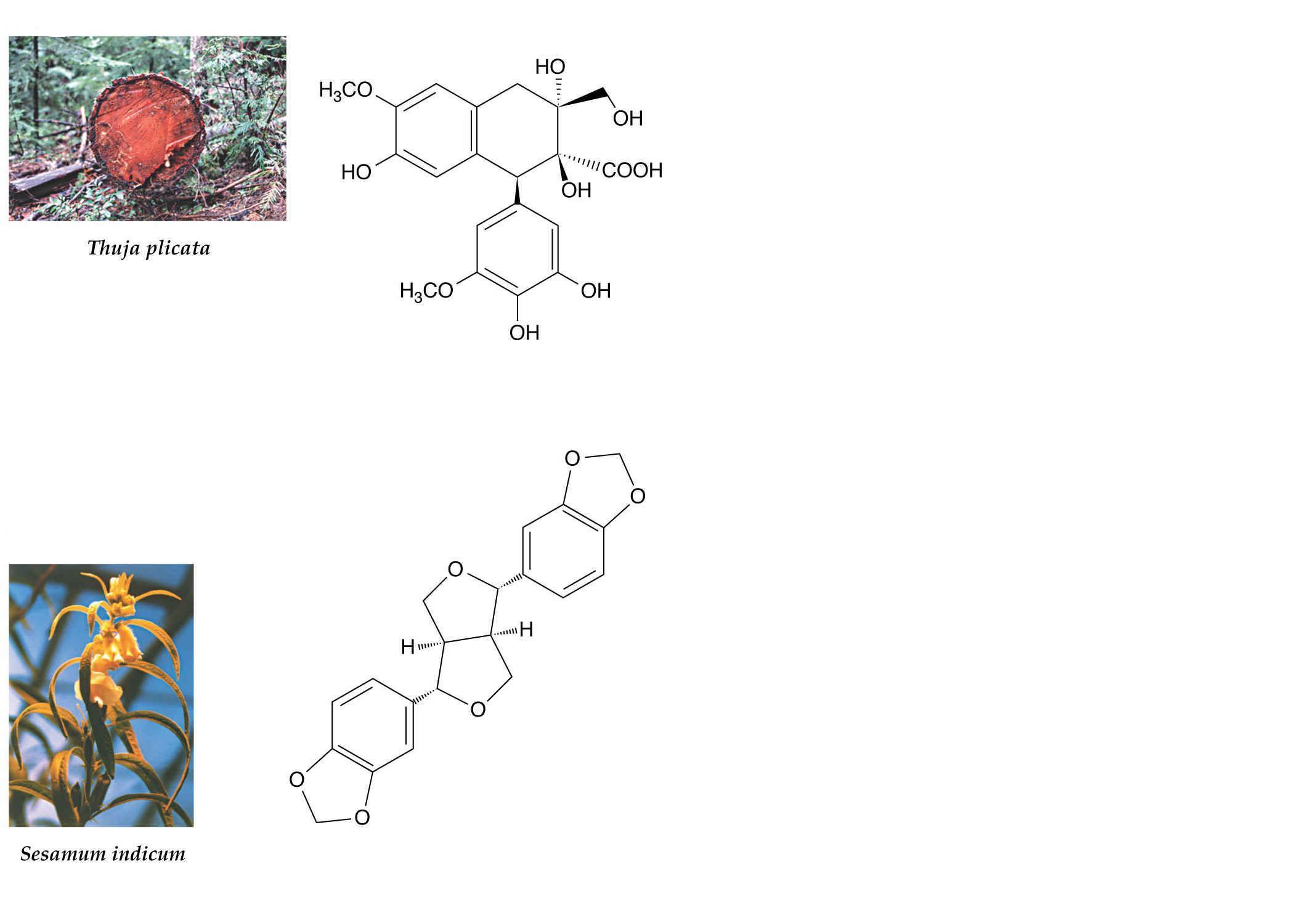
LIGNIN
Lignin is a crossed-linked phenylpropanoid polymer of the cell wall. Known as the second most abundant plant polymer after cellulose accounting for ~ 20-30% of vascular plant tissue.
An exceedingly complex polymer found especially in xylem and schlerenchyma
Roles-
The polymer is derived from three monolignols:
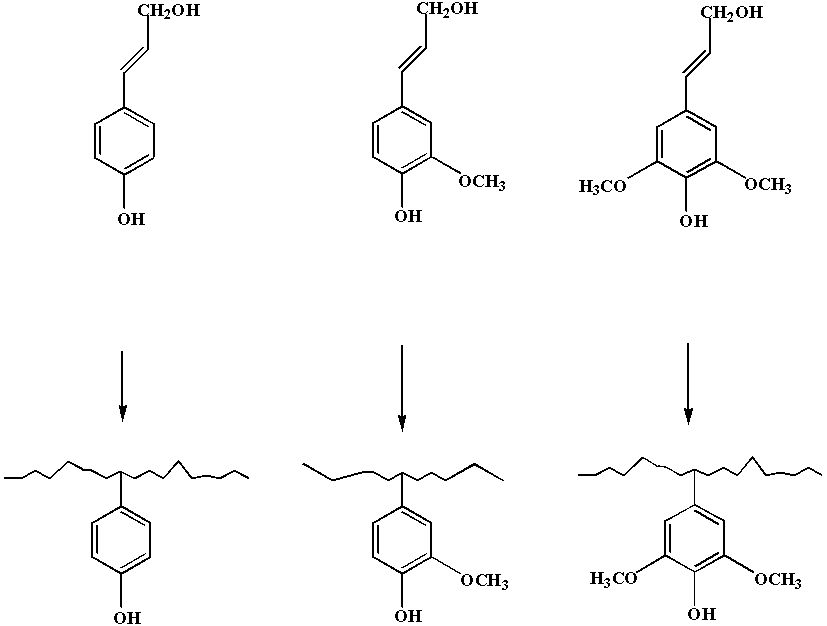
Gymnosperm lignins:
Angiosperm lignins:
LIGNIN BIOSYNTHESIS
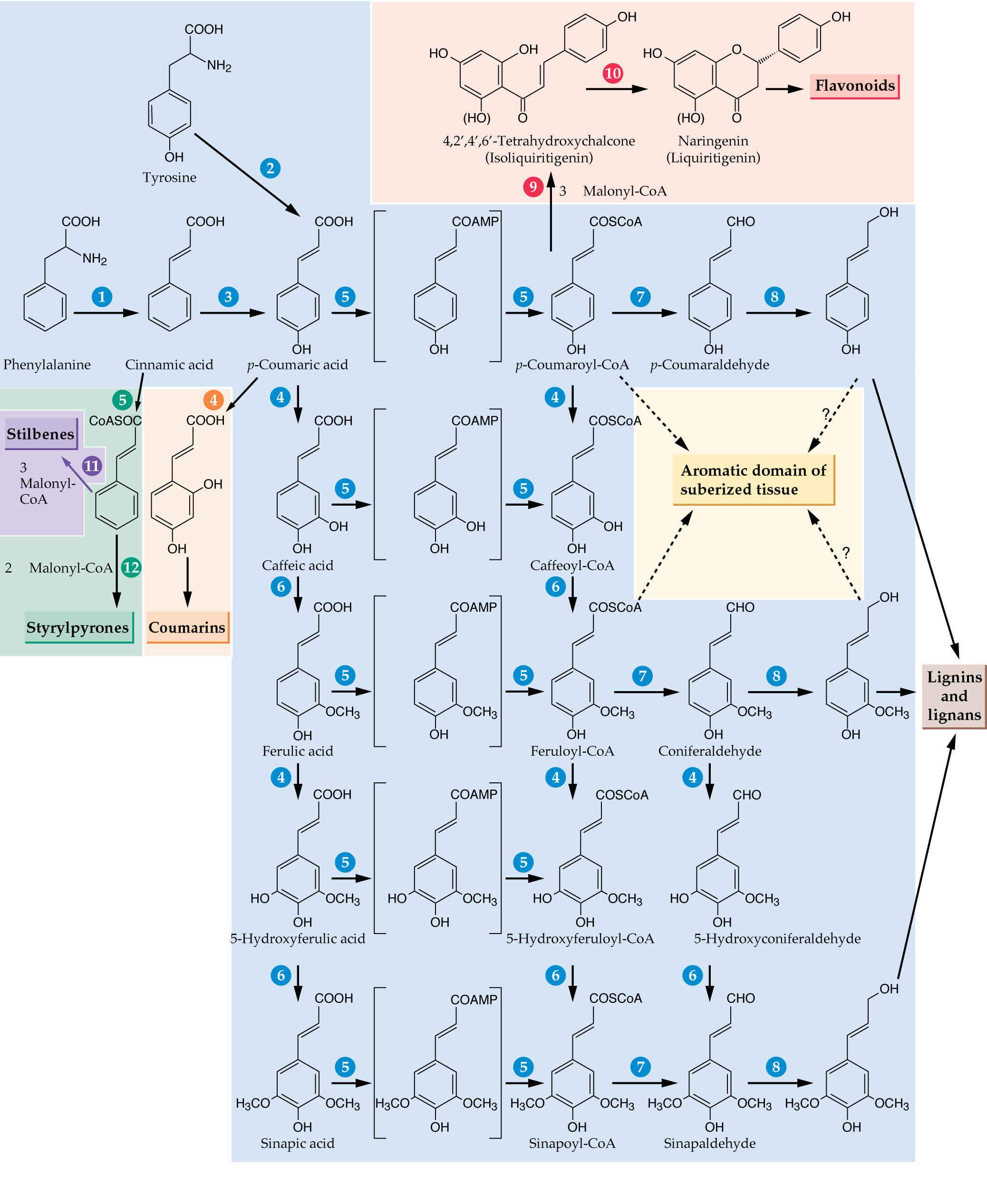
See Fig. 2 of Humphreys and Chapple (2002) for an updated understanding of the biosynthesis of lignin precursors.
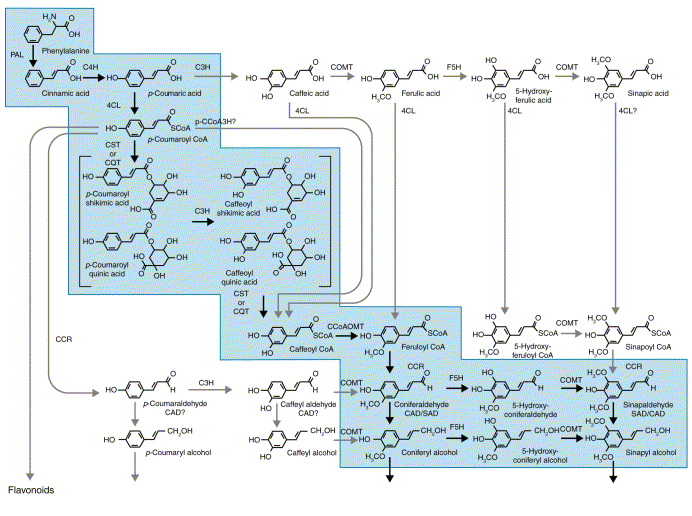
Lignin synthesis begins with transport of monolignols from the cytoplasm to the cell wall.
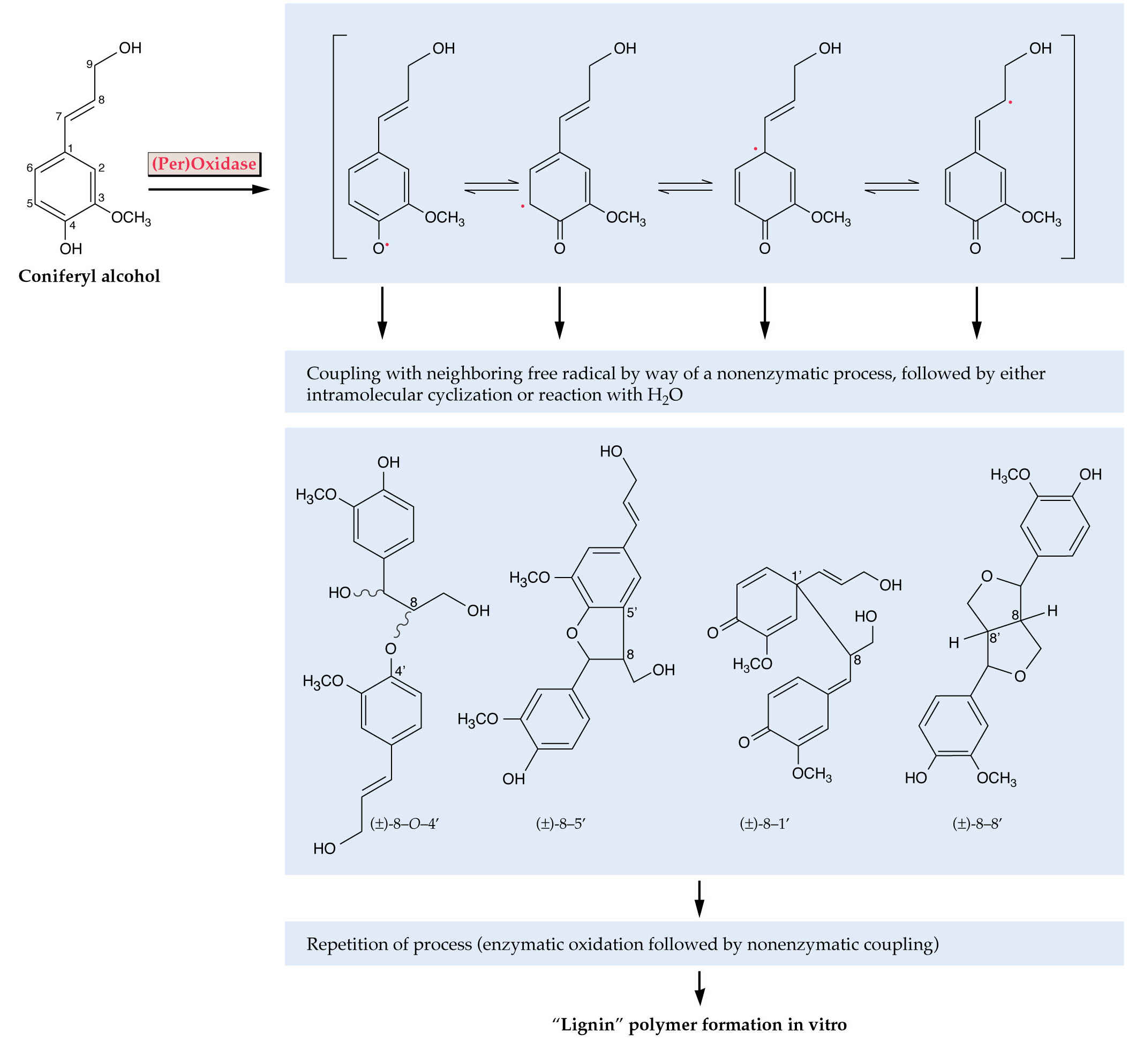
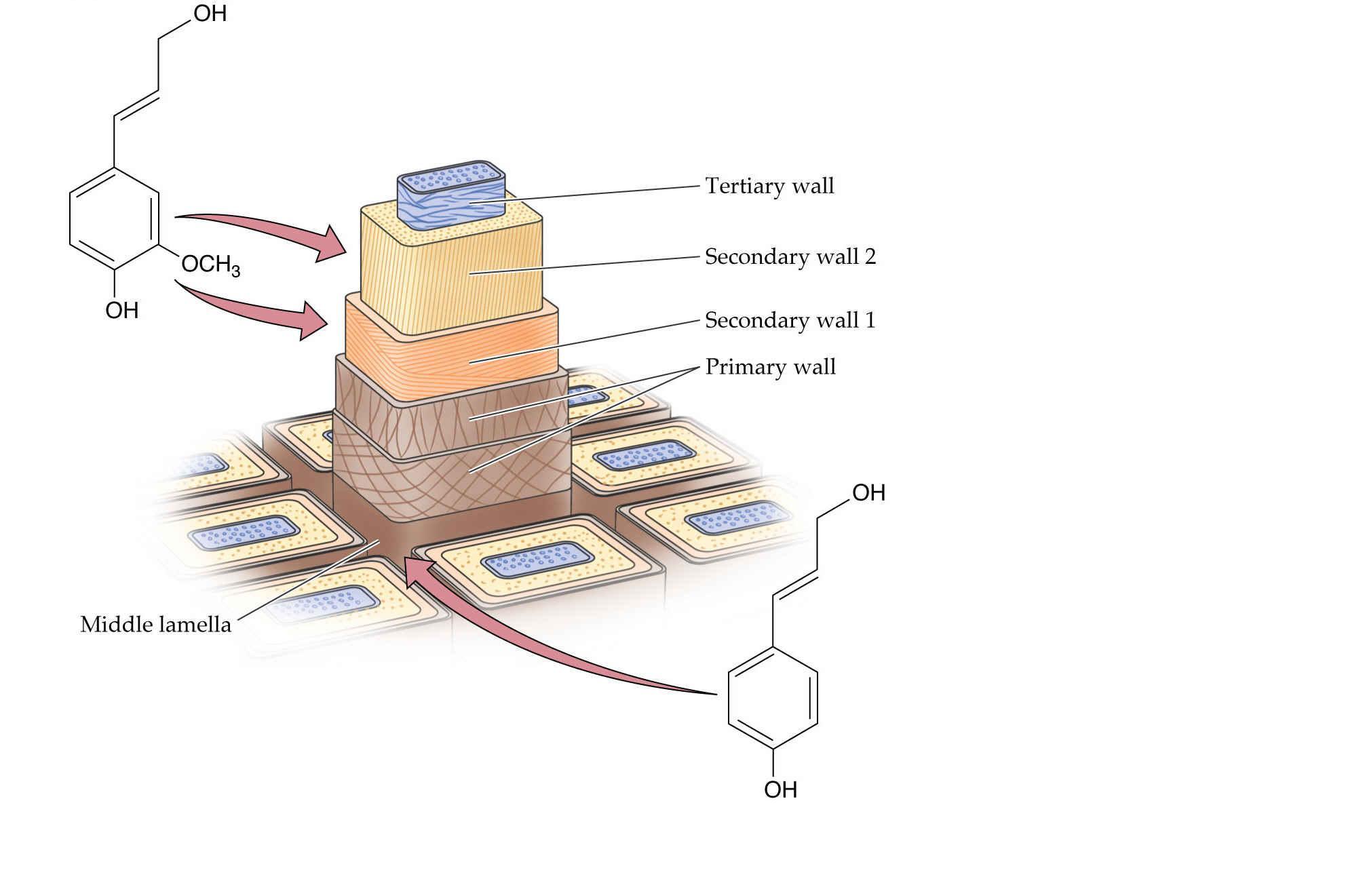
Suberin
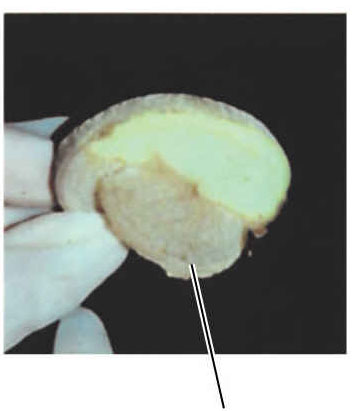
Coumarins
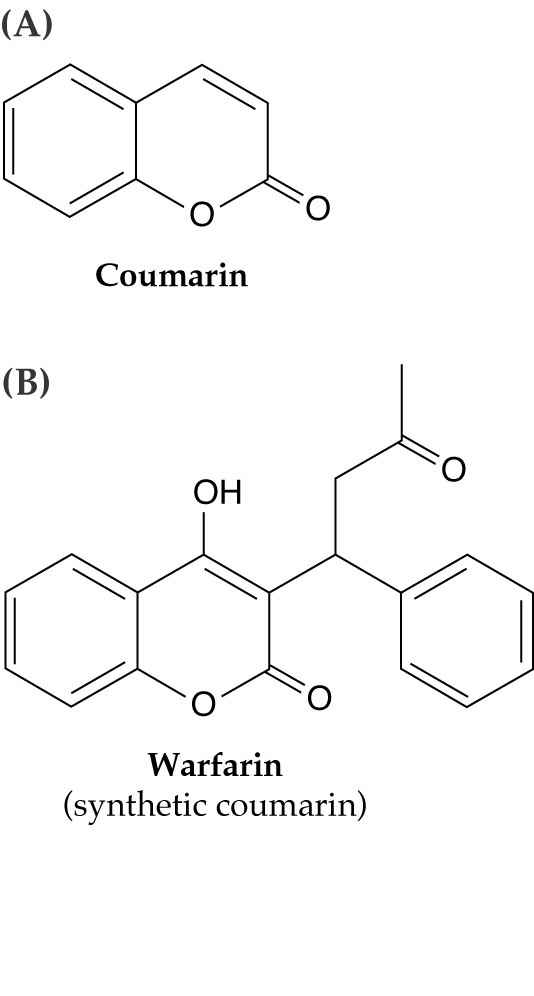

Prospects
Pigments
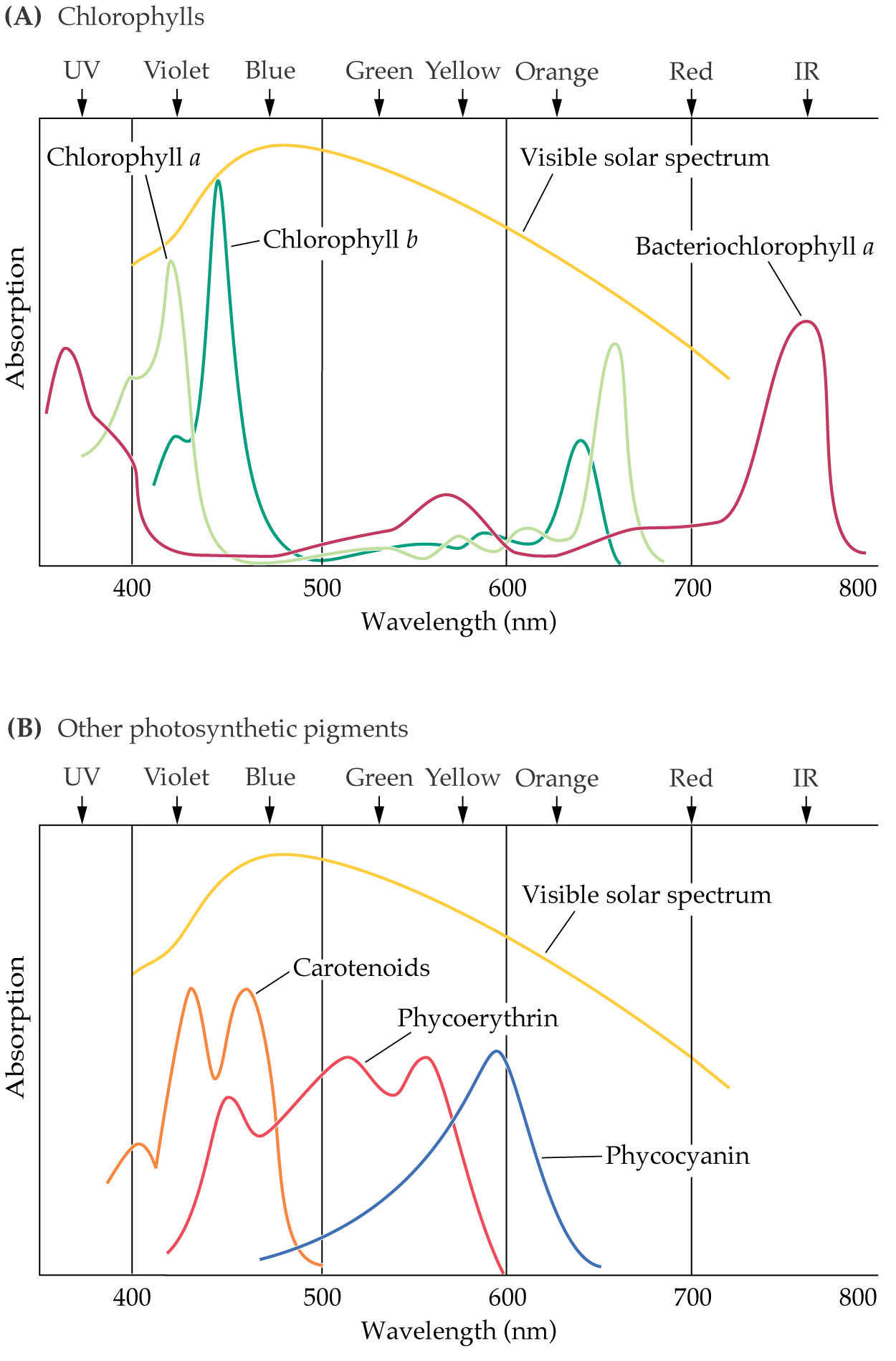
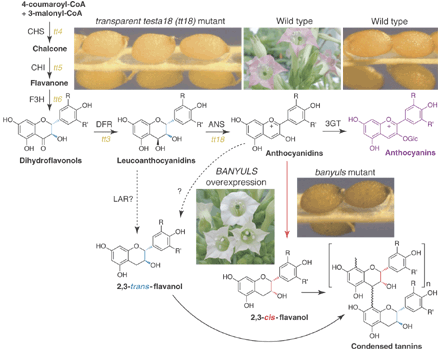
See Xie et al. (2003) for further details.
Health/food quality
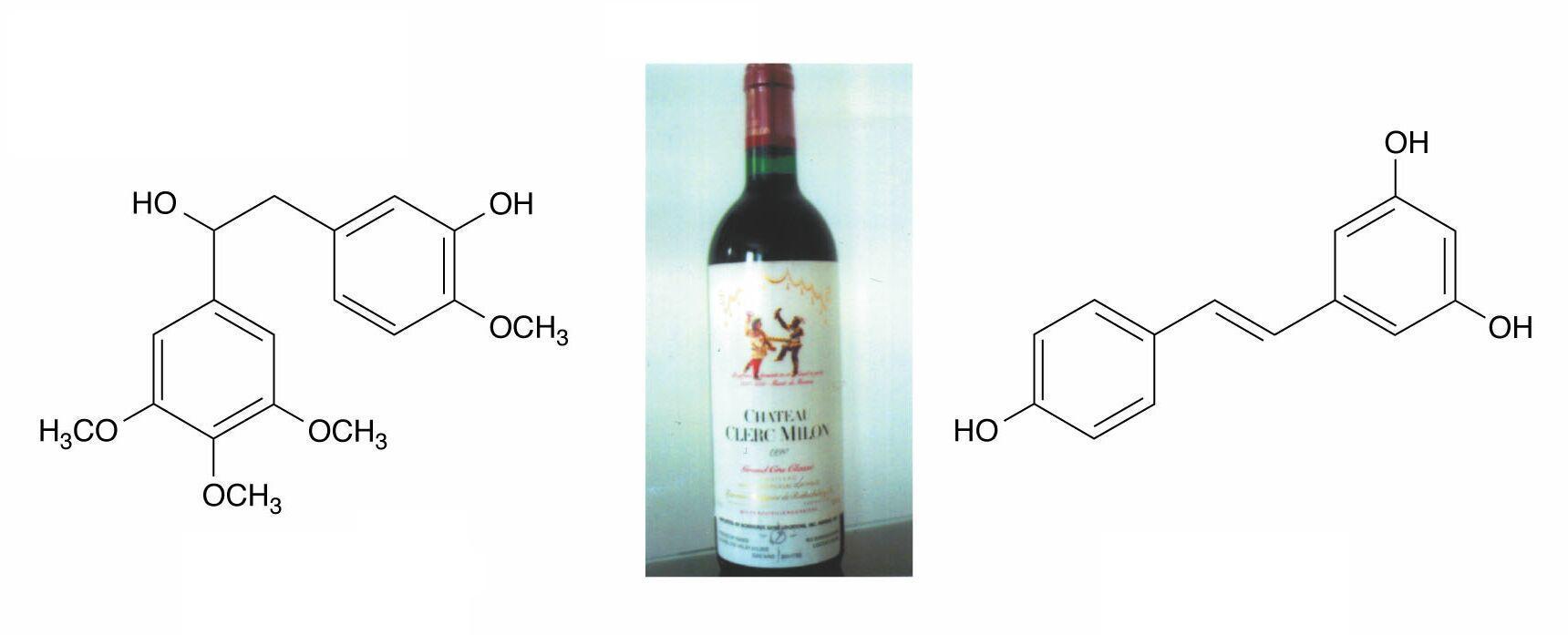
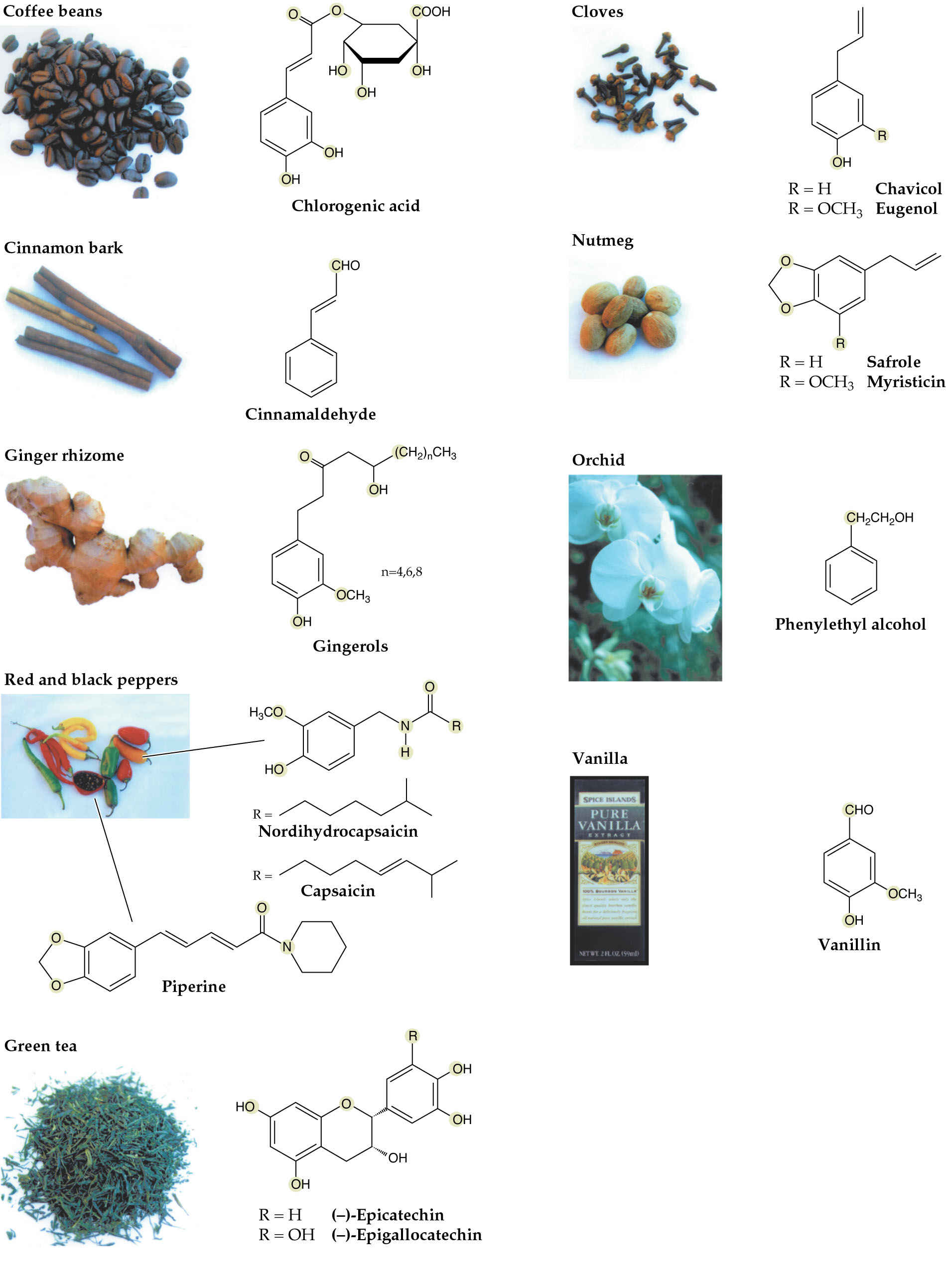
Chocolate...
Lee, K.W., Y.J. Kim, H.J. Lee and C.Y. Lee. 2003. Cocoa Has More Phenolic Phytochemicals and a Higher Antioxidant Capacity than Teas and Red Wine. J. Ag. Food Chem. 57: 7292-7295
Assignment 2. Give the structure and chemical name of vitamin E. Briefly describe its biological importance. What steps/enzymes did Van Eenennaam et al. (2003) (optional reading assignment for Lect. 20) change to increase vitamin E content? [5 points; due at the start of class Tuesday, April 13]
Background Readings for the discussion on nitrogen & N2 fixation:
a) REQUIRED:
1 - Seefeldt, L.C., I.G. Dance and D.R. Dean. 2004. Substrate Interactions with Nitrogenase: Fe versus Mo. BIOCHEMISTRY 43: 1401-1409.
2 - Chapter 16, sections 16.1 - 16.5 of the Biochemistry & Molecular Biology of Plants class text.
b) SUGGESTED:
1 - Cullimore, J. and J. Denarie. 2003. How legumes select their sweet talking symbionts. Science 302:575-578.
2 - Smith, B.E. 2002. Nitrogenase reveals its inner secrets. Science 297:1654.
3 - Miller, RW, Eady, RR, Fairhurst, SA, Gormal, CA and Smith, BE. 2001. Transition state complexes of the Klebsiella pneumoniae nitrogenase proteins - Spectroscopic properties of aluminium fluoride-stabilized and beryllium fluoride-stabilized MgADP complexes reveal conformational differences of the Fe protein. Eur. J. Biochem. 268: 809-818.
4 - King, CA, Purcell, LC and Vories, ED. 2001. Plant growth and nitrogenase activity of glyphosate-tolerant soybean in response to foliar glyphosate applications. Agrononomy J. 93: 179-186.
5 - Lanzilotta, William N., Karl Fisher and Lance C. Seefeldt. 1997. Evidence for Electron Transfer-dependent Formation of a Nitrogenase Iron Protein-Molybdenum-Iron Protein Tight Complex THE ROLE OF ASPARTATE 39* J. Biol. Chem. 272: 4157-4165.
6 - Mylona, Panagiota, Katharina Pawlowski and Ton Bisseling. 1995. Symbiotic Nitrogen Fixation. The Plant Cell 7, pp. 869-885.
| All materials © 2004 David Hildebrand unless otherwise noted. | |||||||
| home | syllabus | lecture schedule & web notes | virtual office hours | messages & answers from the instructor | supplementary material | related links | What's new? |